Merle is fashionable – and so, the risk of unintentional merle x merle matings, which can result in the birth of severely compromised puppies is booming.
Most breeders and bitch owners know that “visible” merle should not be mated to another merle. However, it is much less well known that merle expression is quite complex, and that there are also many dogs that do not “typically” look like merle, but are merle nonetheless. To assess the risk of mating for merle, it is not enough to evaluate the appearance of the dog. Genetic testing is essential to identify if and which merle alleles a dog has. To demonstrate this, I show here a few examples of dogs with merle genotypes, which are visually not or hardly recognizable as merle.
You can also see a schematic overview of such “non-typical” merle types here (German language).
Conclusion: It is indispensable to deal intensively with merle genetics before breeding, in order to avoid risky matings with the greatest possible certainty.

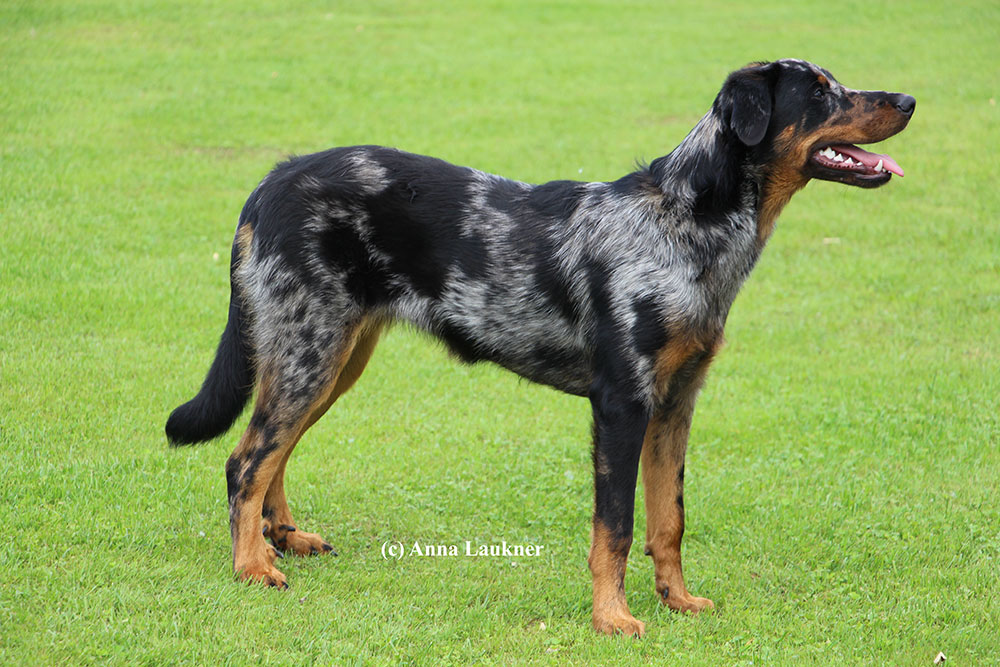
These two dogs (Beauceron of base color black and tan with genotype M/m and Working Australian Shepherd of base color black and tan with brown (b/b) and genotype M/m) should be recognized by everyone as “classic merle”. But what about other genotypes and phenotypes?
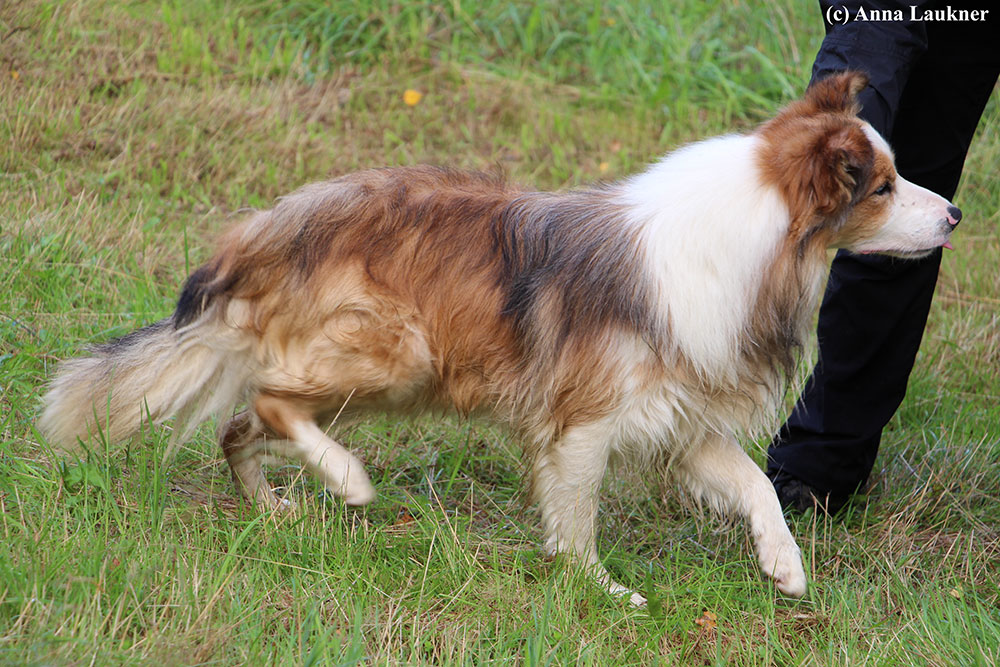
Classic merle in heterozygous genotype (i.e. M/m) expresses itself only on eumelanin (black, brown, “blue” or “lilac” pigment), not on pheomelanin (red, yellow or cream pigment). The base color “sable” is dominant yellow with more or less pronounced dark hair tips. This Border Collie has the genotype M/m, but does not show any merle markings visible at first sight on his coat, which is mainly determined by phaeomelanin (such dogs are also called “hidden merle” or “phantom merle”). A mating with another dog of the genotype M/m could lead to visually and/or hearing impaired puppies.

These Bergamascos have a black base color and an additional progressive graying. Progressive graying causes gradually decreasing pigment deposition in the hair shaft. The color impression is thereby lightened from black to gray as the dog grows up. The right dog has additionally the genotype M/(Mc+)/m, which is a so called merle mosaic. He has the genotype M/m in some cells and the genotype Mc+/m in other cells. Which of these merle variants will be inherited cannot be predicted.
In this case, the dog does have a merle pattern, but the progressive graying makes it more difficult to recognize. If this dog had the corded coat typical of many Bergamascos, visual identification of the merle pattern would be even more difficult.
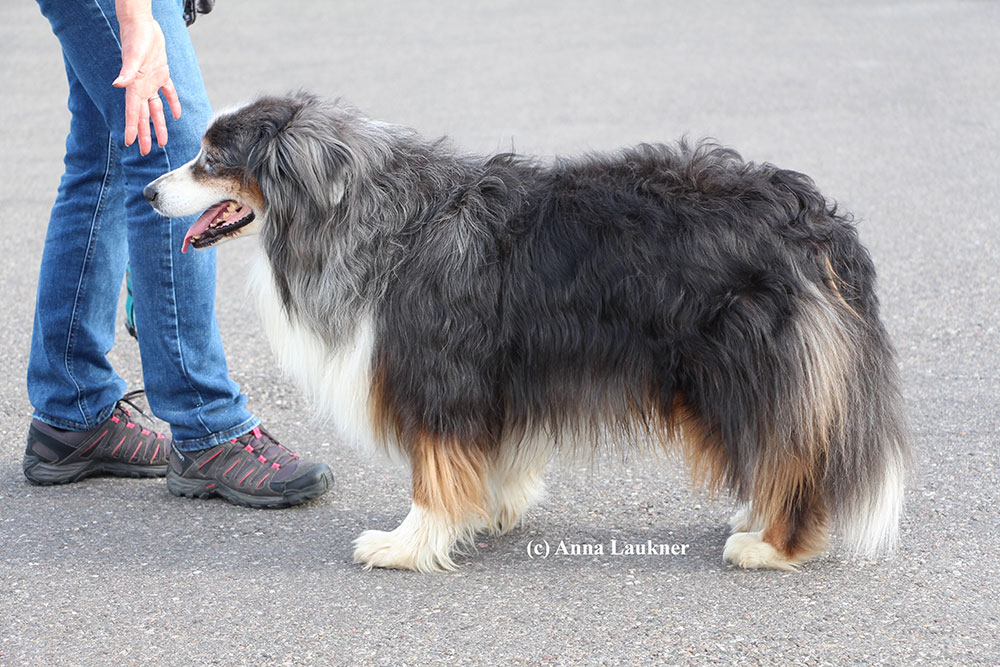
This Australian Shepherd has the genotype Ma+/m. This means that the length of his merle variant (the so-called “insertion”, which consists of base pairs) is slightly shorter than in classic merle (M). This shortening leads to a less “crispy” merle pattern or even no visible merle pattern at all. So, a merle pattern cannot be identified with certainty (in this case also due to the coat type). Nevertheless, this variant poses an increased risk when mating with, for example, classic merle (but also with another dog of the genotype Ma+/m).
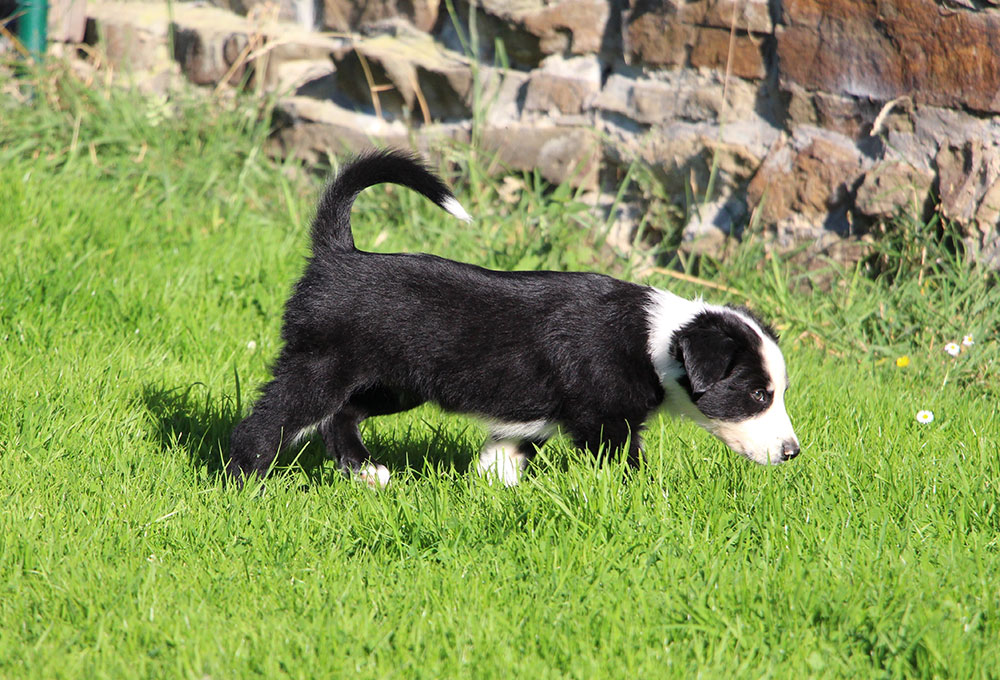
At first glance, this Australian Shepherd cannot be seen to be merle at all. This is a so-called “minimal merle”, where only very small areas of the body show merle markings. The genotype of this dog is Mh/m – he has the longest merle insertion, the so called “harlequin merle”. Mh can be expressed in different phenotypes, just as “minimal merle”, but also with merle markings, which show relatively large spots and areas lightened to white (also referred to as “Herding harlequin”, “Tweed” or “Patchwork” in certain breeds). The mating of Mh to merle alleles always represents a certain risk, depending on the insertion length of the breeding partner with increasing risk.
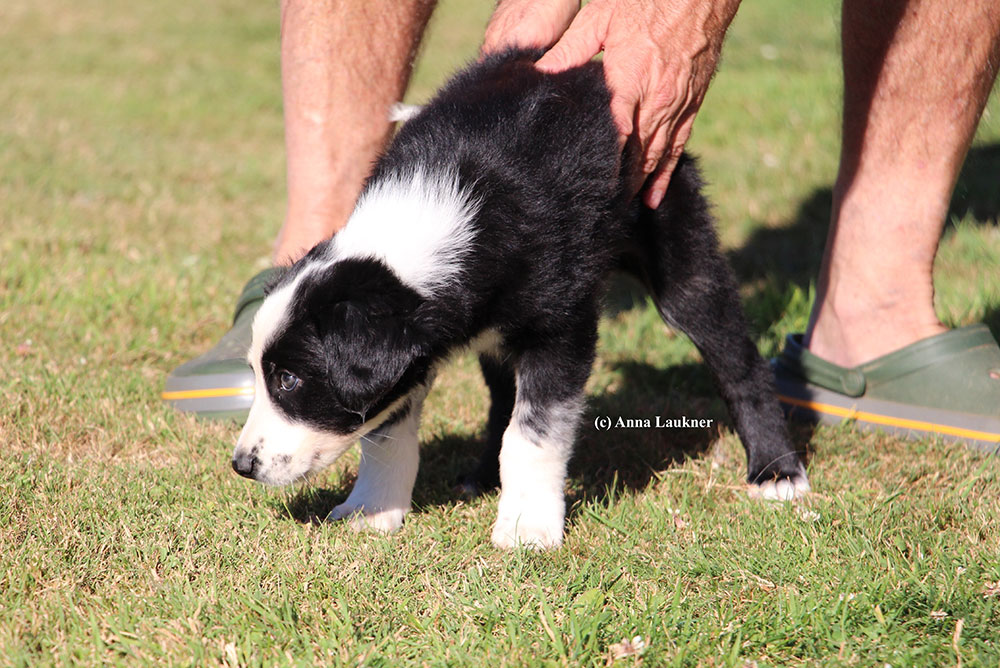
The same dog as in the previous photo, a small merle area can be seen on the left front leg, above the white mark.

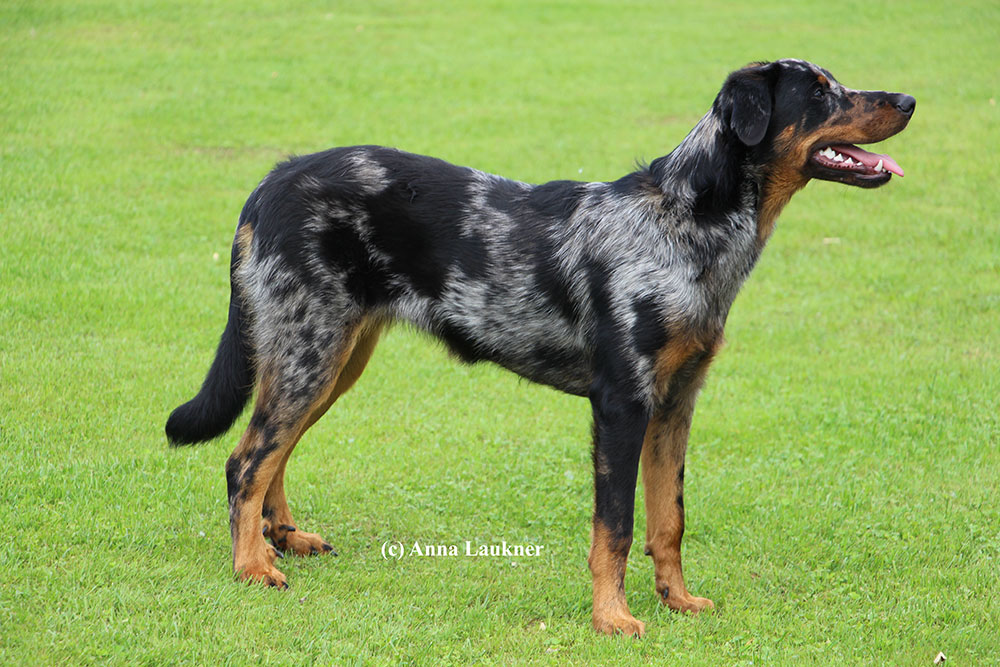


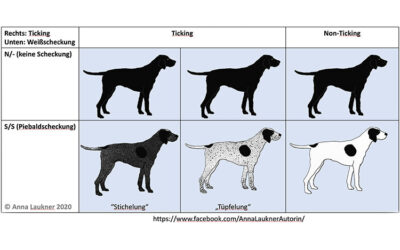
Recent Comments